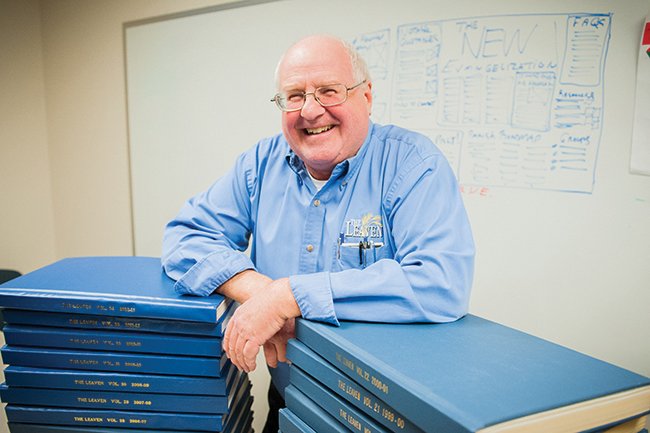
Father Mark Goldasich is the pastor of Sacred Heart parish in Tonganoxie. He has been editor of the Leaven since 1989.
by Father Mark Goldasich
The music pulses: bum bum . . . bum bum bum bum . . . and then a voice speaks from the reel-to-reel tape (which will self-destruct in five seconds): “Good morning, Mr. Phelps. . . . . Your mission, should you choose to accept it . . .”
As you might recall, this is how “Mission: Impossible,” one of my favorite TV shows growing up, began its episodes. I was intrigued by the variety of the missions, the elaborate preparations and disguises, the ever-present sense of danger and the pinpoint timing necessary to pull everything off successfully. I was also fascinated by the exotic locales that the team traveled to. The show transported me far from my familiar and immediate surroundings of Kansas City, Kansas, into the great big world out there.
Oddly enough, even though we now have plenty of opportunities to easily travel and explore the globe, many people today seem to have chosen instead to turn more inward. Consequently, there is a tendency to think that “our” reality as Americans is “the” reality. That attitude can spawn a tremendous fear of “the other,” those who are not like us.
Let’s face it: The actual reality of the world often clashes with our perceived reality. Years ago, I found this helpful way to get my mind around the immensity and diversity of our world, courtesy of the United Nations International Children’s Emergency Fund (UNICEF): Picture the entire world as composed of only 100 people. Of those 100, 14 come from North America. Thirty are fair-skinned, while 70 are dark-skinned. Only one of those 100 has a university education. Six of the 100 own 64 percent of the world’s wealth, and all are Americans. Of the 100, 80 live in substandard housing, without electricity, clean water or sewage. Seventy of the 100 can’t read, and 50 suffer from malnutrition. Boy, does that put things into perspective!
The best way, though, that this big world came alive to me was through an experience I had that was similar to that of the Benedictine alumnae, who are featured on the front page and center spread of this week’s issue: making a mission trip. Pam Heiman, of the Benedictine group, summarized the mission experience well: “Even in just a short time doing mission work, your life is still going to be different. You will see the world differently, be more grateful for what you have and enjoy the people around you.”
My mission experience happened in 1980 as a deacon when I was privileged to work among the Kikuyu people for several months in the Diocese of Nyeri in Kenya, East Africa. I will never forget their extraordinary hospitality, incredible generosity, spirited singing and general zest for life.
The people were poor by our material standards, many still living in thatched huts in isolated villages, reached by cratered, muddy roads. But they were rich by any other standard: energized by and committed to their Catholic faith, intensely devoted to their extended family and diligently working to ensure the common good of their communities. What little they did have, they shared freely.
To get a taste of a mission trip — especially if you’ve never been on one — be sure and read about these impressive Benedictine alumnae and their faith, compassion and witness. They’d advise you (as would I) to leap at any opportunity to do a mission trip. Not only will you help others less fortunate, but your experience will be a treasure you’ll benefit from the rest of your life.
But you don’t have to head off to a foreign country to get a mission experience, as this small story reminds us.
On Friday nights in Portland, Oregon, volunteers from Bridgetown Ministries head out to help homeless people, providing them with hot meals, shaves and haircuts. A few volunteers even wash the feet of the homeless.
The leader of Bridgetown Ministries conveys this simple message before the volunteers hit the streets: “When you go out there tonight, I want you to look for Jesus. You might see him in the eyes of a drunk person, a homeless person. . . . We’re just out there to love on people.” (Adapted from a story in “1001 Illustrations That Connect,” edited by Craig Brian Larson and Phyllis Ten Elshof.)
In a nutshell, this is precisely what our faith is all about: to go into the wide world, look for Jesus and “love on people.” It’s a mission that’s entirely possible to accomplish . . . if we only choose to accept it.

